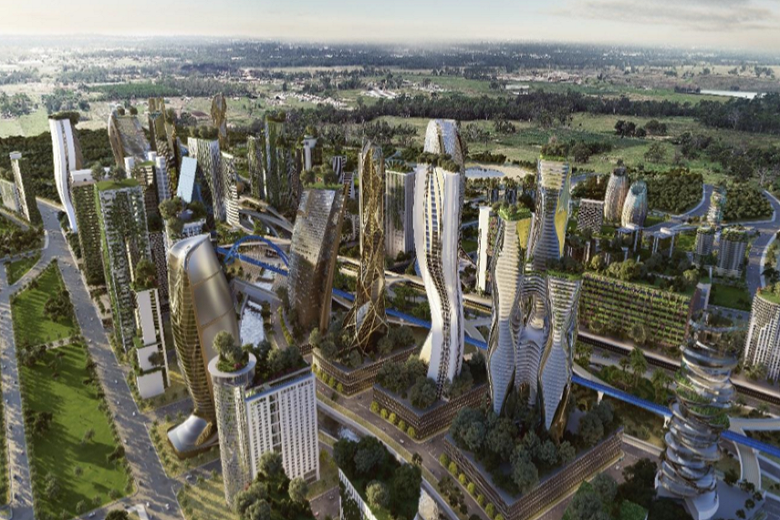
City deals should create affordable rental housing and drive urban productivity rather than being used to fund “trophy infrastructure”, an urban planning expert says.
Professor Nicole Gurran from the University of Sydney is the lead author of a new report from the Australian Housing and Urban Research Institute (AHURI), which looked at the potential of city deals to leverage affordable rental housing choices near employment centres.

“One of our findings is that there’s an opportunity to be more strategic around connecting economic growth to the availability of affordable housing,” Professor Garrun told Government News.
“But there’s always the risk they fund some kind of trophy infrastructure.”
Smart cities plan
The report describes city deals as “strategic funding interventions aimed at spurring economic development through investment and infrastructure supporting jobs, housing and connectivity”.
Professor Gurran said the concept had its origins in the UK about ten years ago, as a way for a central government to bring together stakeholders and intervene in local areas, with an emphasis on devolving powers down to local government – something that is yet to occur in Australia.
The Department of Prime Minister and Cabinet released the government’s first Smart Cities Plan in 2016, where the ‘city deal’ emerged as a way for the Commonwealth to fund what were described as ‘catalytic infrastructure investments’ and drive urban governance and land use reform.
The study notes that by the end of 2019 there were nine city deals in Townsville, Launceston, Darwin, Hobart, Adelaide, Perth, South East Queensland, Western Sydney and Geelong.
It also looked a city deals in the UK, Europe and North America to see if there were lessons for Australia.
“What we wanted to do in this study was show that they’re an example of the way that governments can strategically intervene in particular places,” Professor Gurran said.
“Simply providing funding can lead to negative outcomes where you don’t necessarily help people who are the most disadvantaged.”
Grand plans for western Sydney
Australia’s flagship city deal, the Western Sydney City Deal, was signed by the then Prime Minster Malcolm Turnbull, NSW Premier Gladys Berejiklian and the mayors of Blue Mountains, Camden, Campbelltown, Fairfield, Hawksbury, Liverpool, Penrith and Wollondilly councils in March 2018.
The deal provides a 20-year framework for coordinating existing and new investment, planning and infrastructure provision across federal and state governments and local councils within the Western Parkland City.
The commitments listed in the deal focus on ‘a liveable 30-minute city, with infrastructure and facilities that bring residents closer to jobs, services, education and the world’.
It anticipates 200,000 new jobs, largely stimulated by the Western Sydney Aerotropolis, and a series of initiatives around industry investment, agribusiness, science and technology, and higher education are being progressed.
Improved connectivity through public transport investment is a key theme, with the centrepiece being a North South Rail Link.
The deal also embeds the Greater Sydney Commission’s 20-year housing supply targets of 184,500 new dwellings for Western Sydney and reiterates the state’s commitment to ensuring that local councils update their local planning instruments to deliver 6–10 year housing targets.
(Video produced by the Western City and Aerotropolis Authority)
However, the report notes that while the WSCD refers to housing affordability, it doesn’t include specific provisions or initiatives in relation to affordable housing.
Professor Gurran says while the deal hasn’t played out yet, so far it’s an example of how to do things well.
“We did a lot of interviews around that deal … and people were overwhelmingly positive,” she said.
“All of the local government partners and the different government agencies involved in the planning were extremely positive about the process, and it seems that it was able to bring people together into the same room and they were able to leverage commitments that were quite strategic. So in actual fact it is quite a good model.”
Satellite cities
Professor Gurran says “satellite cities” near capital city employment centres, like Wollongong and Geelong, can play an important role in providing affordable rental housing for low income workers.
But to do so they can’t just be like treated “dormitory suburbs” designed to absorb metropolitan spillover housing demand, because this has the consequence of increasing the need for commuting.
“The real opportunity is for business to locate there themselves and take advantage of the fact that for their workers living and working within a closer radius with lifestyle benefits is very appealing,” Professor Gurran says.
“So you actually need as much investment in public transport within those satellite areas as well as magnet infrastructure like universities that can encourage a cluster of activities around them.”
Comment below to have your say on this story.
If you have a news story or tip-off, get in touch at editorial@governmentnews.com.au.
Sign up to the Government News newsletter